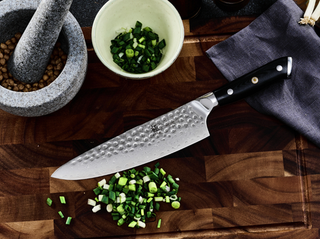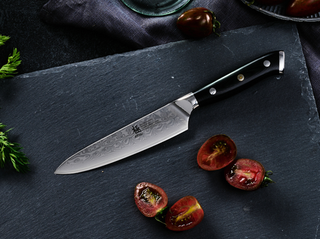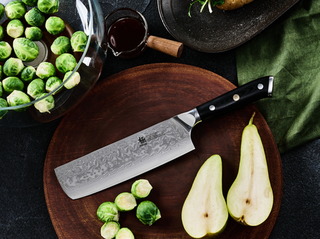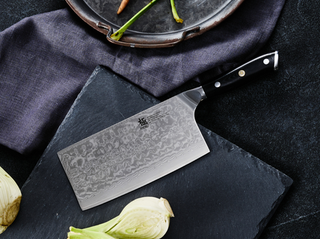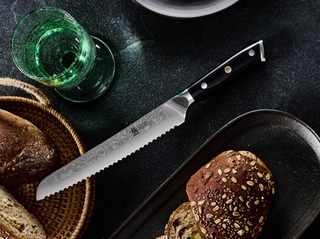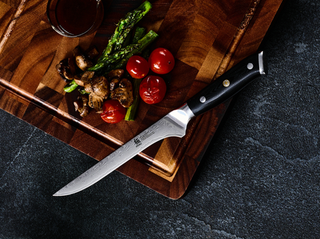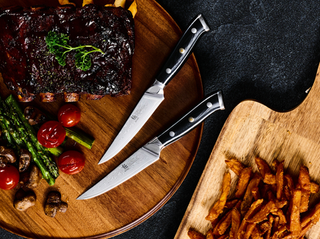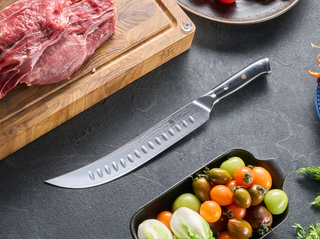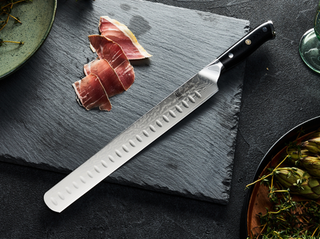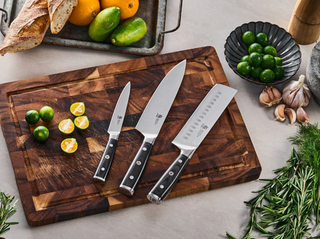As the holiday season approaches, kitchens everywhere buzz with the excitement and aromas of festive cooking. Whether you're a seasoned chef or a home cook, mastering essential knife techniques is crucial for preparing those memorable holiday meals. From carving the perfect turkey to dicing vegetables for your favorite stuffing, the right knife skills not only make meal preparation more efficient but also elevate the presentation of your dishes. In this blog, we'll explore five indispensable knife techniques that will enhance your holiday cooking experience. So grab your favorite chef's knife and let's delve into the art of precision cutting, essential for holiday meal preparation!
Technique 1: Precision Dicing
Precision dicing is an essential skill in your holiday cooking repertoire, especially when preparing stuffings, sides, or garnishes that require ingredients to be cut into small, uniform cubes. This technique not only ensures consistent cooking but also adds a professional touch to your dishes.
Step-by-Step Guide to Precision Dicing
- Choose the Right Knife: A sharp chef's knife is ideal for dicing.
- Prepare the Ingredient: Start by peeling and slicing off the ends.
- Stabilize Your Ingredient: Make a flat surface by cutting the ingredient in half and laying it cut-side down.
- Make Vertical Cuts: With your fingers curled for safety, make even vertical slices, keeping the width consistent for uniform dicing.
- Horizontal Cuts (if needed): For ingredients like onions, make a few horizontal cuts.
- Crosswise Cuts: Finally, cut across the vertical slices to create perfect cubes.

Remember, control and safety are key. Keep your movements steady and focused. With practice, your dicing technique will improve, enhancing the overall quality of your holiday meal preparation. Precision dicing not only improves the texture of your dishes but also contributes to a visually appealing presentation, making your holiday meals unforgettable.
Technique 2: Slicing for Roasts
Slicing meat for holiday roasts is an art that transforms a simple meal into a festive feast. Perfect slices of roast not only look appealing but also ensure that each bite is tender and flavorful.
Key Steps for Slicing Holiday Roasts:
- Let the Roast Rest: Before slicing, let the meat rest to allow juices to redistribute.
- Choose the Right Knife: A long, Scling knife is a good ideal for slicing roasts.
- Slice Against the Grain: Look for the direction of the muscle fibers and slice perpendicular to them. This method yields tender pieces.
- Consistent Thickness: Aim for even, thin slices for uniform cooking and presentation. A carving fork can be used to hold the roast steady.
- Glide, Don't Saw: Use a smooth gliding motion rather than a sawing action. Apply gentle pressure, letting the knife do the work.

By mastering these slicing techniques, you ensure that your holiday roasts are not just delicious but also a centerpiece for the eyes. The perfect slice can enhance the flavors and make the festive meal even more special.
Technique 3: Paring for small, precise cuts
Paring knife techniques involve a range of precise and delicate tasks, typically executed with a small, sharp knife. Key techniques include:
- Peeling: removing the skin from fruits and vegetables
- Trimming: cutting away small, unwanted parts like eyes or bruises.
- Slicing Small Items: Perfect for thinly slicing smaller fruits and vegetables.
- Deveining Shrimp: Removing the vein from shrimp with precision
- Hulling Strawberries: Removing the stem without wasting much fruit
- Segmenting Citrus Fruits: Cutting out individual citrus segments cleanly
- Creating Garnishes: Crafting decorative elements for dish presentation
These techniques emphasize control and finesse, making the paring knife a vital tool for detailed culinary tasks.
Technique 4: Mincing for Flavorful Bases
Mincing is a fundamental technique for creating flavorful bases for many holiday dishes. It involves finely chopping ingredients like garlic and onions, which form the aromatic backbone of countless recipes.
Mastering Mincing:
- Choose the Right Knife: A chef's knife is ideal for mincing.
- Peel and Trim: Start by peeling your garlic or onions and trimming off the ends.
- Rough Chop: Cut the ingredient into slices, then rough chop them.
- Rocking Motion: Place the tip of your knife on the cutting board, using a rocking motion to finely chop the pieces. Keep the heel of the knife moving up and down rapidly, while the other hand guides the ingredients under the blade.
- Gather and Repeat: Use the knife to gather the pieces back into a pile and continue mincing until the desired fineness is achieved.
This mincing technique is essential for preparing holiday flavors. Finely minced garlic and onions release their flavors more effectively, ensuring that every bite of your holiday meal is packed with taste.
Technique 5: Filleting for Fish Dishes
Filleting fish is a skill that elevates holiday seafood dishes to a new level. Whether you're serving a traditional Christmas Eve fish supper or a special holiday brunch, knowing how to fillet fish properly is crucial.
Essential Steps for Filleting Fish:
- Select the Right Knife: Use a flexible, santoku knife.
- Scaling and Cleaning: Ensure the fish is scaled and gutted before you start.
- Initial Cut: Start by making a cut behind the gills and pectoral fin, down to the backbone.
- Separate the Fillet: Gently slide the knife along the backbone, separating the fillet from the ribs. Keep the knife as close to the bones as possible for maximum yield.
- Remove the Skin (if needed): Place the fillet skin-side down and slice between the flesh and skin, moving the knife in a sawing motion.
- Trimming: Trim off any excess fat or bones.

By mastering the art of filleting, you not only ensure that the fish cooks evenly but also present it in a way that's visually appealing. This technique is perfect for holiday seafood, where both taste and presentation play a key role in the festive experience.
Enhance Your Holiday Cooking with Kyoku’s Japanese Knives
Frequently Asked Questions (FAQs)
Precision dicing ensures uniform size of ingredients, which promotes even cooking and enhances the professional appearance and texture of holiday dishes.
2. What are the key tips for slicing roast meat properly?
Allow the roast to rest before slicing to let juices redistribute, use a long, sharp slicing knife, cut perpendicular to the grain, keep slices consistent in thickness, and use smooth slicing motions to avoid jagged edges.
3. What tasks is a paring knife best suited for?
A paring knife is ideal for peeling, trimming small blemishes, thin slicing of small fruits and vegetables, deveining shrimp, removing strawberry stems, segmenting citrus, and creating decorative cuts.
4. How can one master mincing to enhance the flavor of holiday dishes?
Use a sharp chef’s knife, peel and roughly chop garlic or onions, then use a rocking motion with the knife tip anchored, repeatedly gathering and chopping until the desired fineness is achieved to release maximum flavor.
5. What are the basic steps for filleting fish?
Clean the fish by scaling and gutting, use a flexible Santoku or fillet knife to cut behind the gills along the backbone, carefully separate the fillet from the bones, and remove skin and excess fat if needed to produce clean, intact fillets.
